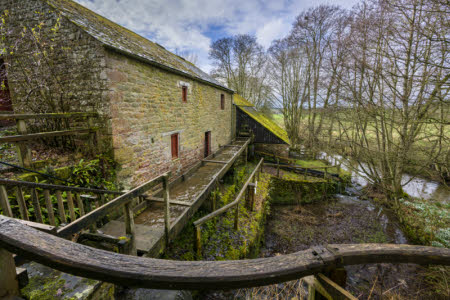The Solway Coast Area of Outstanding Natural Beauty (AONB) stretches from just north of Maryport to Rockcliffe near Carlisle, taking in a wide variety of important habitats along the way including salt marsh, sand dunes, mudflats and lowland raised peat bog.
The south-western part of the AONB is characterised by long beaches, often backed by low dunes. The main settlements here are Allonby and Silloth, both of which are very popular with local people seeking a seaside fix. Silloth, in particular, with its broad, cobbled avenues, still retains much of its elegant Victorian charm. Take a walk along its promenade, separated from the town by one of England’s longest village greens, and watch for harbour porpoises in the sea.
Beyond Grune Point and the mud- and sandbanks of Moricambe Bay (not to be confused with Morecambe Bay further south), the AONB boundary swings east. The outlook across the open water towards the hills of Dumfries & Galloway is replaced now by views across the salt marshes and mudflats of the River Eden’s broad estuary. The villages of Bowness-on-Solway (the western terminus of the Hadrian’s Wall Path), Port Carlisle, Burgh by Sands and Rockcliffe are located here.
If you’re thinking of visiting the Solway Coast AONB, come armed with binoculars because it’s superb for wildlife. More than 10 per cent of the UK population of endangered natterjack toads live on the Solway salt marshes and dunes, while bird species include a wide range of waders and wildfowl, staggeringly huge numbers of which spend winters here. Parts of the South Solway Mosses National Nature Reserve, including the massive Bowness Common and Campfield Marsh, lie within the AONB. This is one of the most important areas of lowland bog in England and is where botanists will discover a range of sphagnum mosses, sundew and other weird and wonderful bog-loving plants.
There are two other AONBs in Cumbria: the North Pennines, on the eastern edge of the county, and Arnside and Silverdale, in the south.





